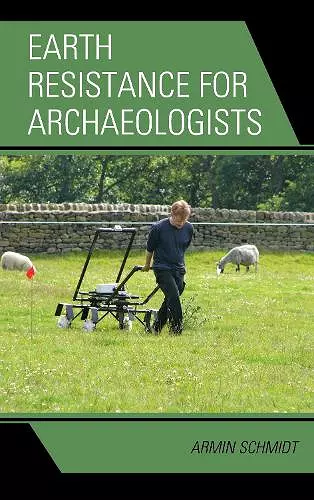Earth Resistance for Archaeologists
Format:Hardback
Publisher:AltaMira Press
Published:21st Feb '13
Currently unavailable, and unfortunately no date known when it will be back

Earth Resistance for Archaeologists, written by the foremost expert in the field, provides archaeologists with the know-how required to exploit the significant potential of earth resistance methods. A wide variety of possible uses are presented, including cases where earth resistance surveys succeeded in mapping buried archaeological remains that magnetometer surveys were unable to detect. Examples include earth resistance data from many archaeological sites, including in England, Scotland, Nepal, Bangladesh, and more. The archaeological features that can be detected through earth resistance methods are varied, ranging from ditches, pits, and grave cuts to stone and brick foundations, and even include whole landscapes. Whereas area surveys were traditionally the most common earth resistance method, depth profiling and vertical imaging have become well-developed tools that allow electrical depth investigations in three dimensions. Both techniques are described in detail and archaeologists will be able to apply them in their work. Content is equally relevant for environmental investigations.
Schmidt covers the topic in a consistent way, keeping a balance between theory and practice and making use of limited mathematical concepts. In this way, the book is meant to be as clear as possible for archaeologists (but also for specialists from other disciplines) who may lack sufficient mathematical background but are still eager to gain some knowledge on resistivity prospection. Combining a well-balanced mixture of theory, practical issues, and examples, the book can become a standard reference for undergraduate students and even professionals. * American Journal of Archaeology *
Perhaps the greatest strength of the book – which requires a skill not to be underestimated – is the success with which it takes this complex subject, distils it, and presents it in such a way that nonspecialists as well as geophysicists will find it approachable and enlightening. It is clear that the author not only has great expertise in the field, but is also a natural teacher: the text remains focused, concise and readable throughout. It is infused with enthusiasm, making it engaging and motivating. . . .As archaeological geophysics continues to grow in terms of knowledge, application and profile, in both the commercial and academic worlds, this book is arguably long overdue. * Archaeological Prospection *
Newcomers to earth resistance studies will be delighted that Armin Schmidt has distilled a huge body of historical and modern sources to provide a clear and unambiguous guide to the theoretical underpinning of the subject. While there are plenty of geophysical text books that cover some of the issues within this volume, none focus on the near surface as effectively. Experienced archaeological geophysicists will find many thoughtful insights that will open new areas of research and learning. For teachers and students alike, this volume will be indispensable. -- Chris Gaffney, University of Bradford, UK
Earth Resistance for Archaeologists offers a comprehensive and up-to-date treatment of the subject from one of the world’s foremost teachers and practitioners. Beginning with basic concepts of electricity it develops the theory of earth resistance, examines how it can be measured in the ground with a variety of arrays, indicates how archaeological features are expressed and how they may be imaged in plan, in profile, or three-dimensionally, and gives a host of examples ranging from field case studies to recipes for data processing. Earth Resistance for Archaeologists offers a comprehensive and in-depth review suitable for beginners, who will benefit from its clear discussions, many illustrations, and example applications, and for the advanced student who can jump into theoretical details. This book is exactly what the increasing number of archaeologists who employ resistance surveys need to better understand what they are doing and why and to improve their craft to reach state-of-the-art practice. -- Kenneth L. Kvamme, University of Arkansas
ISBN: 9780759112049
Dimensions: 236mm x 160mm x 22mm
Weight: 463g
218 pages